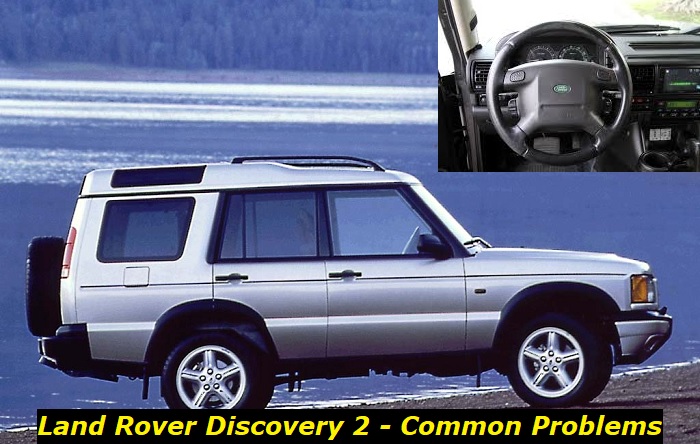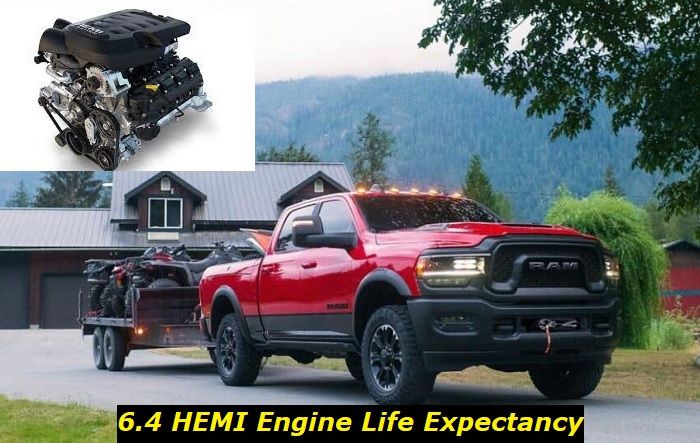Do you own any of the Land Rover Discovery II series and are experiencing problems with the car?
You are not alone. Many drivers report some common problems with the Land Rover Discovery II series, which are peculiar to each model.
Here is an article that lists the common problems and solutions for these problems that are common with Land Rover Discovery II.
Read on to find out.

The Land Rover Discovery II
The Land Rover Discovery II series is great when it comes to off-roading. If you live in the woods or a place with rocky terrains, the Land Rover Discovery II is a great car to keep.
Although there are opinions that Land Rover Discovery I is better than the Land Rover Discovery II, the fact is that they both use 4X4 wheel drive, have strong and good engines, and have good clearance.
The Land Rover Discovery II comes with some identifying specs. Its 1992-2002 models came with a 4.0-liter engine V8, but the 2003 and 2004 models had a 4.6-liter V8 engine. You normally have the option of choosing between a 4-speed auto or a 5-speed manual transmission. However, as with the US automotive market, it is difficult to find manual transmission models.
Although this car is very good, the Land Rover Discovery II drivers report some common problems peculiar to the car.
If you have experienced some of these problems with your car or are about to buy one and just curious about the possible problems to expect, check out the list below to find out what to expect.
Land Rover Discovery II Common Problems
Below are some common Land Rover Discovery II problems.
1) Transmission-Related Problems
One of the most common problems with the Land Rover Discovery II is frequent transmission failure due to fatal damage from the positioning of the front drive shaft. This damage is not occasioned by any component of the transmission at all.
The Land Rover Discovery II transmission is well-designed and placed. This frequent damage is a problem caused by the positioning of the front drive shaft.
The front drive shaft is located in front of the transmission on the left side. But these drive shafts often break down and rupture pretty badly when they do. They break apart into different sections.
When this happens, the ruptured drive shaft will swing around and slam right into the side of your transmission, breaking the aluminum casing of the transmission and leaving you in need of a new transmission and a new front drive shaft.
Apart from this common occurrence, other problems with the Land Rover Discovery II transmission include the following:
- Jumping and grinding during acceleration
- Burning smell and whistling sound from the hood while the car is in motion
- Grinding sound when the car is in motion
- Delayed engagement of the transmission
2) Engine-Related Problems
The Land Rover Discovery II series comes with v8 engines. But these engines have their faults, mainly relating to a fundamental fault in the building material.
The Land Rover Discovery II engines are made of aluminum instead of steel. The commonest problem with the Land rover discovery II engines is head gasket failure.
Land Rover Discovery II engines suffer from a chronic head gasket issue. The cylinder heads and blocks are made of aluminum.
This fundamental flaw in the build material is why the engines suffer from frequent head gasket failures and cracked blocks. Symptoms to watch out for if you suspect cracked blocks include misfires and fast coolant consumption.
Although this problem is extremely typical with the 2003 and 2004 models, the other models are also victims of this engine problem.
Also, the oil pump, which goes in front of the engines and runs off into the crankshaft, gets bad from overtime. What usually happens is that the oil pump gears crack and fail to provide the required oil pressure needed to lubricate the bearings, rods, and pistons. This problem is pretty rampant with the Land Rover Discovery II V8 engines.
Your car may encounter a bad rod bearing from the change in the clearance between the connecting rod and the camshaft resulting in the production of a knocking sound, and all these problems necessitate the need for a brand new or spare engine.
The slip-cylinder sleeves of the Land Rover Discovery II engines are not made of aluminum. You can confirm by holding a magnet over them. They are made of steel, and this comes with its challenges.
These sleeves often wander off or break. When this happens, they cause a lot of engine noise while the car is in motion. This usually leads to the need to buy a new engine or rebuild the engine.
3) Door Lock-Related Problems
Another problem with the land rover Discovery II series is the failure of the door lock mechanism. Many owners of the land rover discovery II models report that their vehicles have problems with the door locking mechanisms.
Although most report that the door lock mechanism failure is especially related to the driver and passenger doors, it is not uncommon to find that all the doors can have the same problem.
Despite the fact that many drivers reported having challenges with the fob disconnection, most cases are often related to the actuator not functioning or not functioning properly.
Essentially, the actuator is a teeny electronic device in the door near the lock. It usually contains a motor that secures or unlatches the door lock by engineering the mechanical links.
Some of the signs to watch for to know when your actuator has failed include the following; inconsistent response from the actuator, delayed response from the actuator, no response from the actuator, your car doors may lock or unlock without any active operation from you, etc.
4) Ignition Lock Problems
The ignition lock is another car part that goes bad on the Land Rover Discovery II models. The ignition lock is the block where you insert your car key to start your land rover.
This ignition lock is responsible for keeping your car safe from theft, apart from starting the car. When your car ignition lock goes bad, you may have to change the whole ignition lock.
5) Problems With the Anti-Lock Braking System Pump
There is also a problem with the Anti-lock Braking System pumps on these cars. These pumps suffer from high failure rates but do not keep you from driving your car.
Ideally, these pumps are safety systems in your car that come as part of the ABS.
They contribute to stopping risky brake locking. This, in turn, helps prevent skidding and loss of traction.
However, if you live in a state where inspection requires that the Anti-lock Braking System of your car is in good working condition, that is another repair you'll have to do before you go to inspection.
Solutions to the Common Problems of Land Rover Discovery 2
For engine and transmission problems, it is advised that you visit a certified expert mechanic to diagnose the problem(s) properly and do the needed repair. This is because DIY approaches to serious engine issues like cracked blocks and head gasket failures may lead to more serious issues and the risk of an accident on the road.
Repairing it yourself may put you and other road users at risk of a fatal road accident. So it would be best to leave it to the experts.
The same applies to issues relating to a damaged transmission due to impact from the damaged drive shaft.
If you have an ignition lock-related problem in your Land Rover Discovery II, you can wholly opt to take it to the mechanic for repair. Otherwise, you can do the repair yourself if you have the skills.
The procedure entails removing the ignition lock, disassembling it, and rolling out the barrel.
After that, you want to grind down all the bras segments sticking out of the lock while your key is all the way in. You can use a bench grinder or just file it down.
A quick trick is to remove the brass segments sticking out when your key is all the way in the ignition lock. If you have already broken your key inside the ignition, remove the broken key from inside the spinner.
You do not need to order a new ignition assembly if you have lost or broken all your keys. You can get some blank keys from the nearest locksmith around you and make your own.
Ideally, for any issues your car may have, it would be best to leave the repair to the experts in the field to handle. This will save you time and money and ensure that all safety concerns that may arise because you are not an expert in the field are laid to rest.
Bottom Line
While you may find it convenient to deal with trivial repairs like ignition and door-lock-related problems, it is strongly recommended that you take your car to a certified mechanic for repairs if it is complex, like engine-related problems.
About the authors
The CarAraC research team is composed of seasoned auto mechanics and automotive industry professionals, including individuals with advanced degrees and certifications in their field. Our team members boast prestigious credentials, reflecting their extensive knowledge and skills. These qualifications include: IMI: Institute of the Motor Industry, ASE-Certified Master Automobile Technicians; Coventry University, Graduate of MA in Automotive Journalism; Politecnico di Torino, Italy, MS Automotive Engineering; Ss. Cyril and Methodius University in Skopje, Mechanical University in Skopje; TOC Automotive College; DHA Suffa University, Department of Mechanical Engineering






Add comment